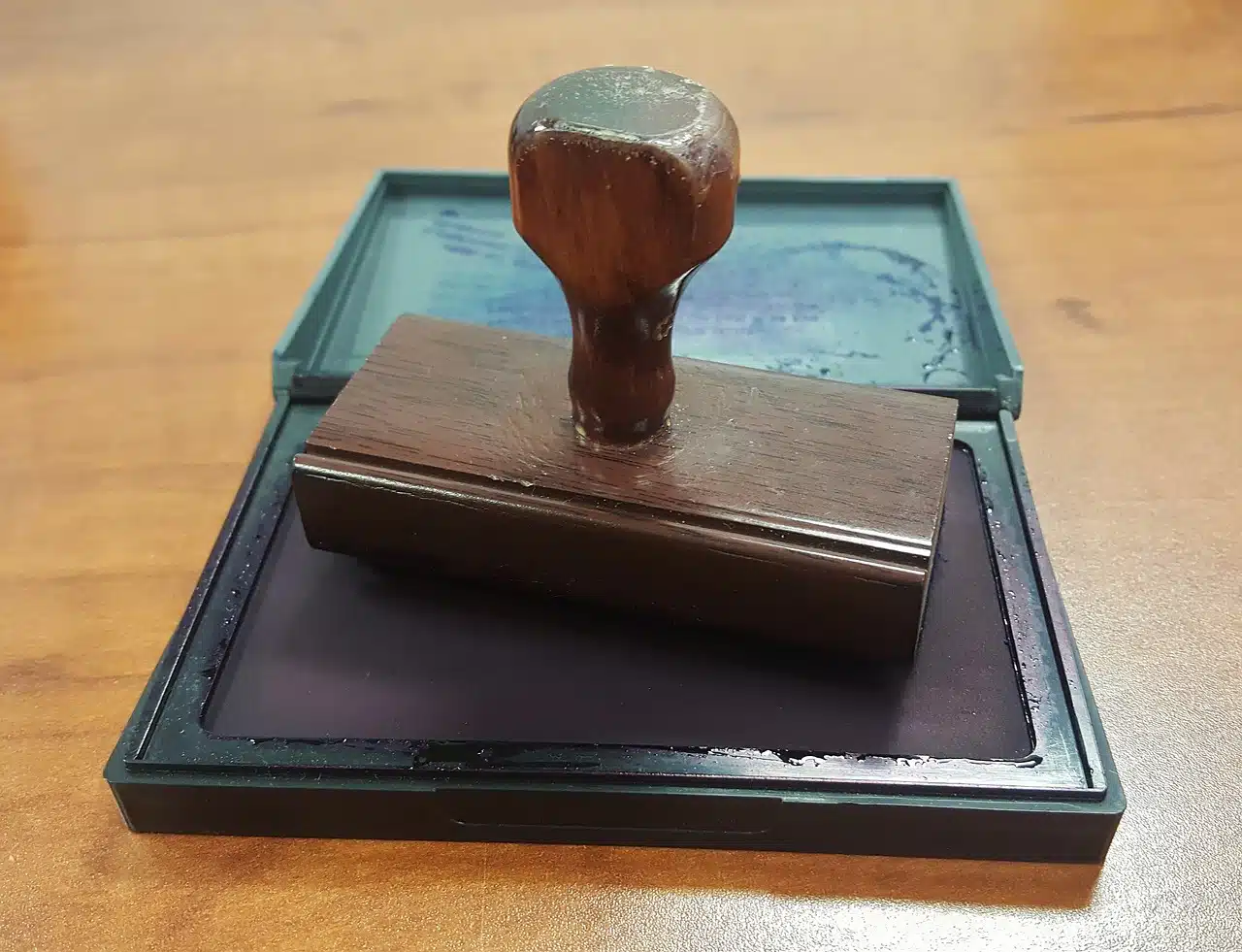
A seal is an element that has engraved images and that, through the printing of ink on a surface, is used to authorize or give conformity to a document.
A stamp is a utensil with engraved images that, by printing ink on a surface, allows authorization or approval to be given to documentation or to close a document. It is common for this mark , which is also known as a seal, to be made together with one or more signatures.
Seals, a term from the Latin sigillum , were created by the ancient populations of Egypt and Mesopotamia . Made of stone, metal or ceramic materials, they allowed letters and various records to be sealed.
The invention of the press , with the appearance of movable type , helped the spread of the stamp. Over time, some stamps began to include a pad that displays the ink being used, making it easier to use.
Most common use of the seal
The most common use of the seal is in state agencies, where the marking of documents is very common. Postal services, on the other hand, use stamps to render postage stamps (or postage stamps ) useless.
A date stamp is known as one that, with moving parts, allows the date to be modified to mark it on a surface. The numerator stamp , for its part, modifies the marking sequentially and makes sealing easier within the framework of a continuous process .

A stamp allows you to mark a letter or documentation.
Quality recognition
A quality seal is an approval given to a particular product or service, after contrasting its characteristics with a series of criteria that are previously defined by pre-established standards. This brand, which can come in different shapes, colors and sizes, often inspires confidence in consumers, assuring them that their transaction will be satisfactory and legal.
It is worth mentioning that the process necessary to obtain said certificate is absolutely voluntary, so its absence is not synonymous with a lack of ethics and, in an ideal case, it should not be a cause for suspicion.
The term label is also used to name the fragment of paper that adheres to some documentation to grant them legitimacy and the registered trademark or company linked to the music or publishing industry ( "The singer signed a contract with a label that is willing to publish his concept album” ).
The fall of record labels
Record labels have undergone various structural changes in recent years, given the massive acceptance of digital music and the proliferation of piracy to the point of reaching the status of a legal activity. Colossal companies that in a not-too-distant era enjoyed “semi-divine” power are no more important today than a YouTube channel for a talented person who wants to promote themselves.
This has its positive side, since it is unfair for a small group of people to decide that a musician does not have the necessary skills to succeed in the industry , when ultimately, his potential audience could reach tens of millions, in various countries of the world. everyone. Thanks to the possibilities that the Internet offers us, today it is the public who gives their verdict first, without market knowledge or percentages floating in their minds.
The negative part is that freedom is impossible to achieve in the system to which we belong, since it is based on delegating responsibilities : we allow others to educate our children, to decide what we need to eat, to offer us plans to have fun on the weekends. and tell us what we should like.
The decline of record companies gave rise to the birth of independent labels, which began with great humility and passion, but gradually became more and more important, which attracted more artists and increased the digits of their checks. Over time, as people set their sights on the distractions of consumerism, the giants rise again.
